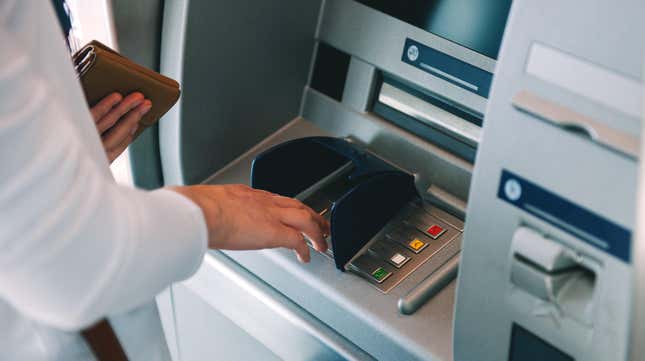
To keep our money safe, most of us have, at minimum, a checking and a savings account. But many Americans have no sort of bank account at all. Outside of struggling with fees or lack of credit history, reasons for being “unbanked” often involve privacy concerns, or a general lack of trust in banking institutions.
However, in an economy that assumes you have full access to traditional banking, living an unbanked lifestyle is not only inconvenient, but downright unaffordable. Here’s what to know about being unbanked, and how living unbanked comes with its own set of costs.
What does it mean to be “unbanked”?
To be “unbanked” means you (and your household) go without a checking or savings account at a bank or credit union. According to a 2021 survey from the Federal Deposit Insurance Corp., around 4.5 percent of U.S. households are estimated to be unbanked. Unbanked individuals use alternative means to manage their money, including prepaid credit cards, nonbank online payment services like PayPal and Venmo, nonbank money orders or check cashing, and cash.
Why would someone be unbanked? Well, it may not be their first choice. According to the survey, many unbanked people don’t have enough money to meet minimum balance requirements, or can’t afford the fees associated with opening an account. Otherwise, some individuals opt to avoid banks out of a lack of trust in banking institutions or due to privacy concerns. If this sounds like you, consider the additional costs you’re taking on by living without traditional bank access.
Consider the costs of being unbanked
The choice to avoid bank-related costs can lead to significant unbanked-related costs. For instance, unbanked individuals are forced to pay high fees for everyday financial services like check cashing and money orders.
The other crucial cost of remaining unbanked: Access to credit. Non-bank credit, like buy here, pay here (BHPH) and payday loans, charge outrageously high interest fees. Living unbanked means you’re living without the primary path to establish credit in our world, impacting your ability to do everything from getting a loan to renting an apartment.
When it comes to the issue of trust, we’d be remiss not to point out that nearly all banks are insured by the Federal Deposit Insurance Corporation, more commonly known as the FDIC. (Credit unions are insured by the National Credit Union Administration.) That means your money is safe, at least in amounts up to $250,000. Look for the FDIC logo at bank teller windows or on the entrance to your bank branch, or check out the FDIC’s bank suite for a list of FDIC-insured banking institutions.
Still, if you are not partaking in traditional “big” banks (whether or not that’s your choice), there are alternative financial institutions that can suit your needs. Look into digital banks and local community banks that can help you get started opening an account.
The bottom line is that the costs of living unbanked generally outweigh the cost of maintaining a bank account. Here’s a starter guide to all the different types of bank accounts available to you.
